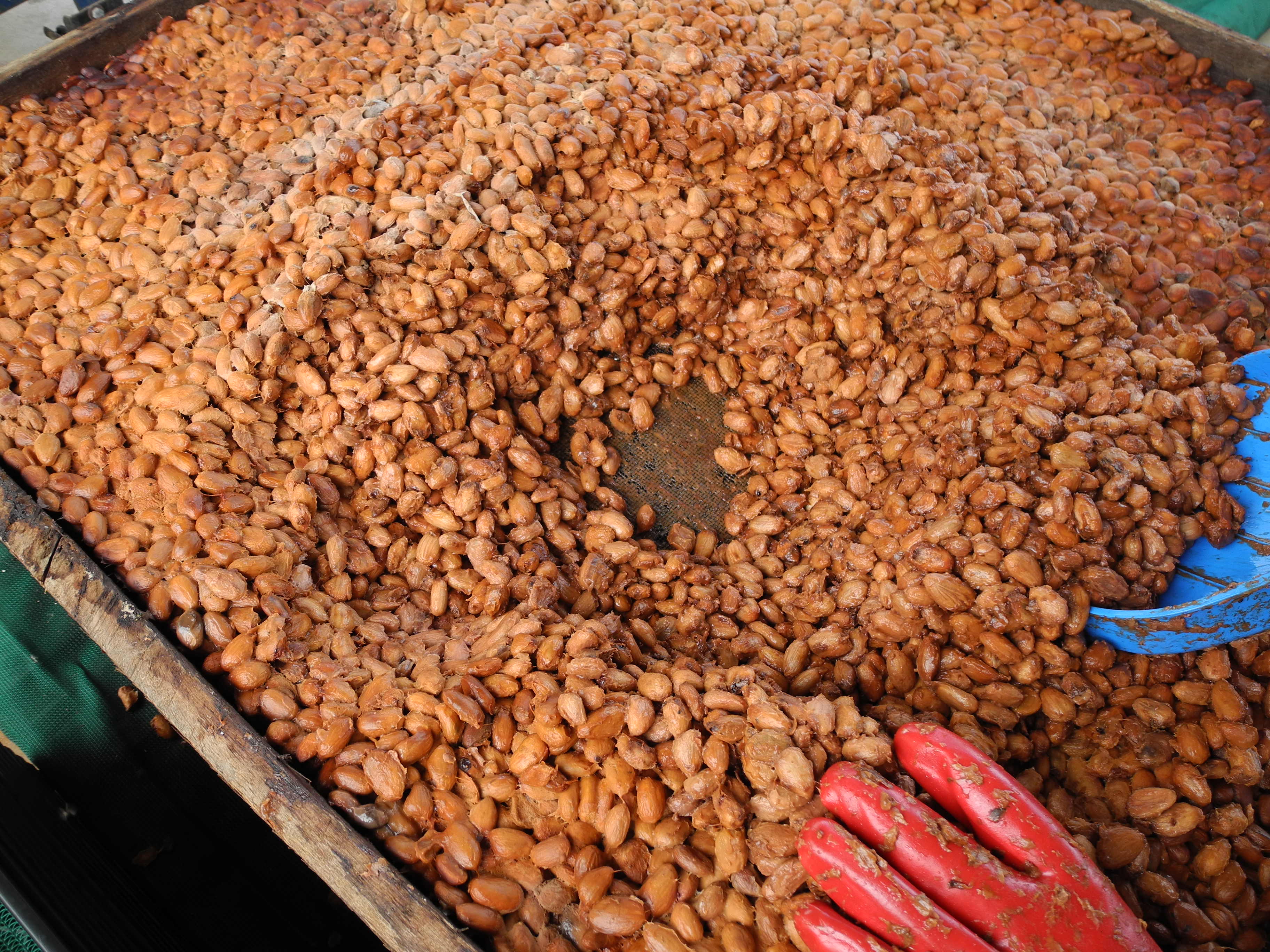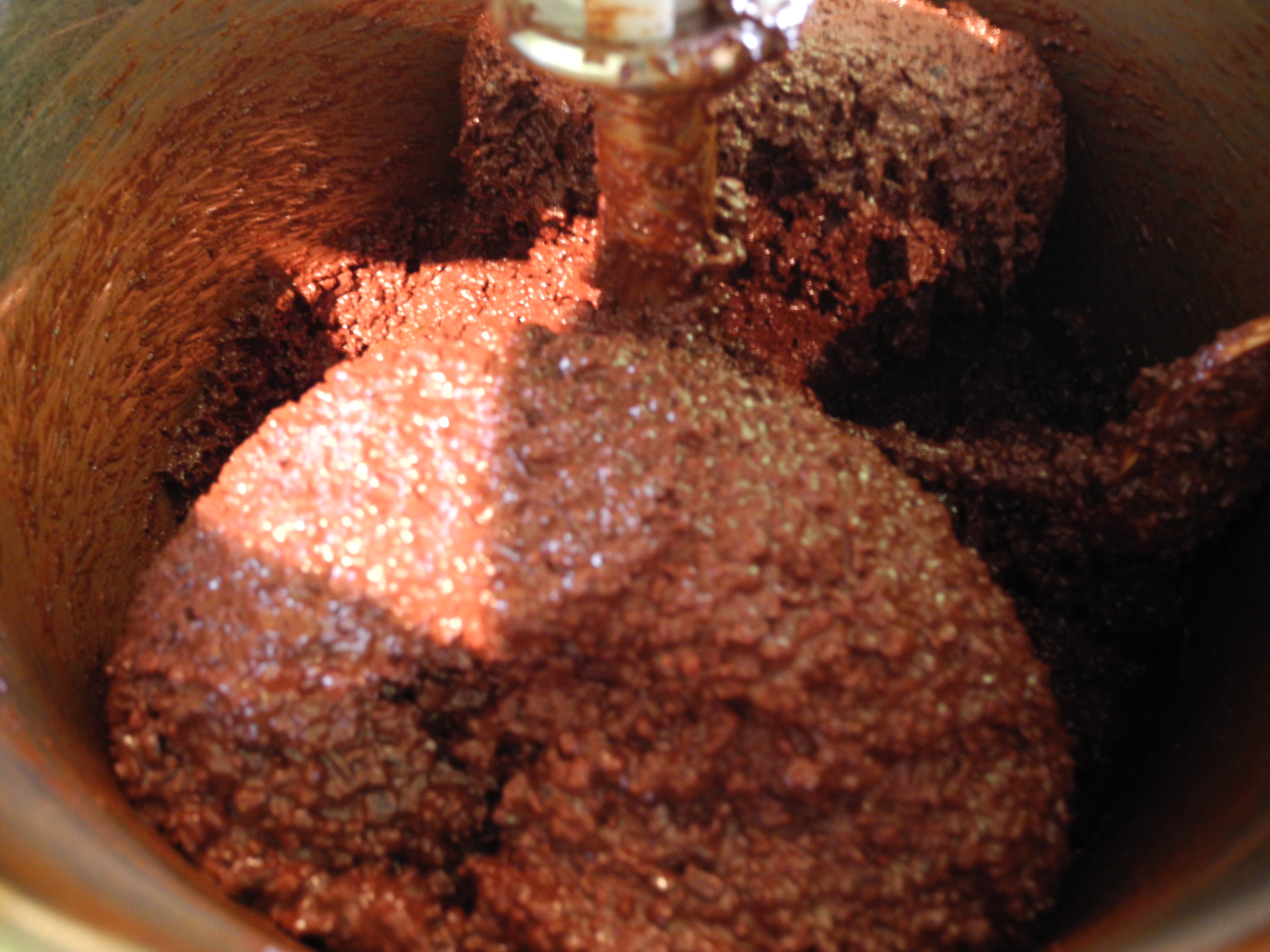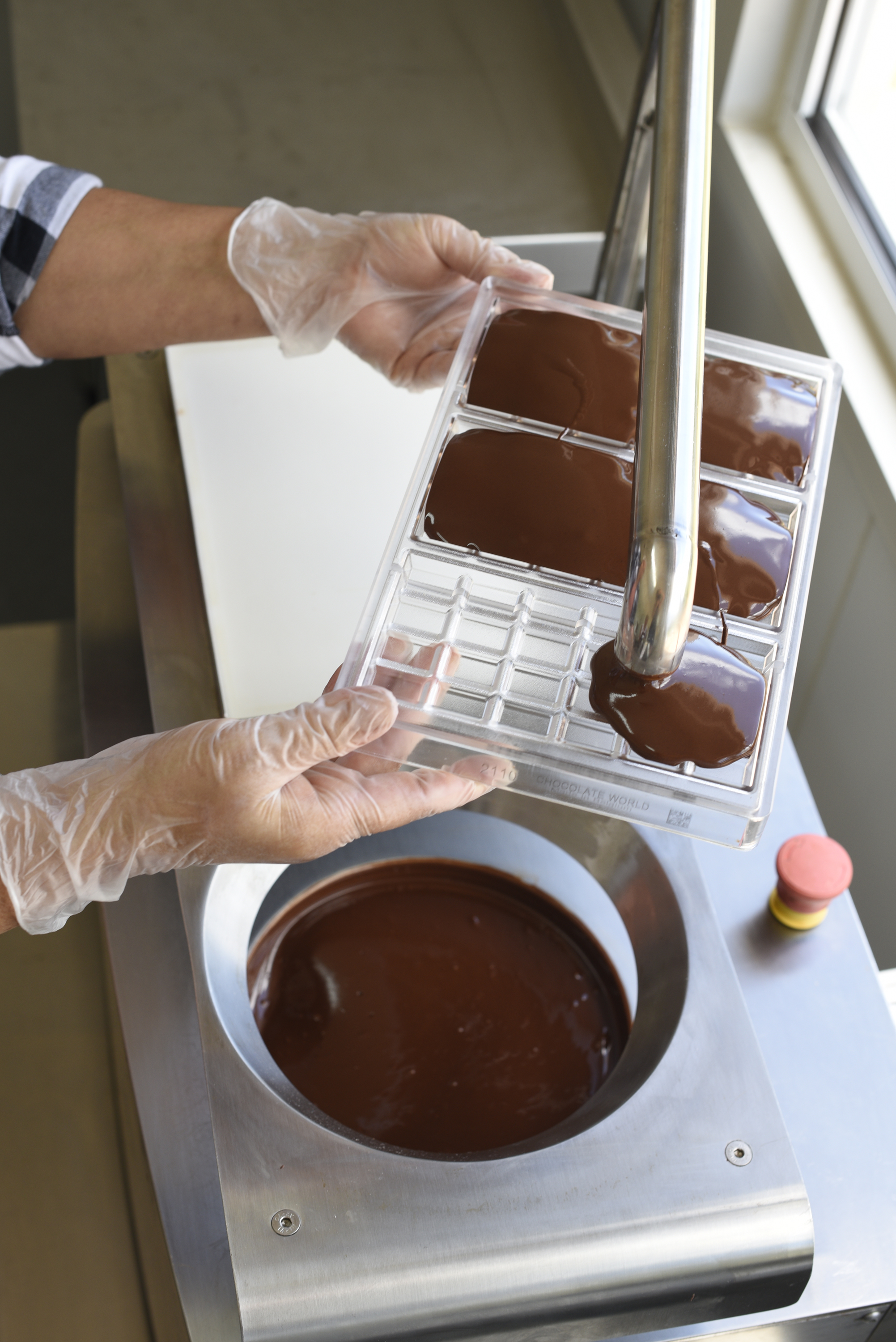Processing

A cocoa pod (fruit) has a 2-3 cm rough, leathery rind, filled with sweet, mucilaginous pulp with a lemonade like taste. It encloses 30 to 50 large seeds that are soft and of a pale lavender to dark brownish purple colour.
During harvest the pods are opened, seeds kept, empty pods discarded and the pulp made into juice. The seeds are allowed to ferment, heating up the cacao beans, which lose their purple hue and turn brown. The adhered skin, the dried remains of the fruity pulp, is released by winnowing after roasting. Winnowing was first developed to separate grain from straw and remove pests. At its simplest, produce is thrown into the air so wind blows away the lighter material, leaving heavier material to fall for recovery. Our specialised cocoa winnowing equipment does the same for chocolate making.

Cocoa beans fermenting
Once roasted and winnowed, using a conche (a vessel filled with stone grinders) which act as grinders, the cocoa nibs can transform into chocolate. Legend has it that Rodolphe Lindt (who invented the conche in Berne, Switzerland in 1879) mistakenly left a mixer containing chocolate running overnight. Lindt’s invention produced chocolate with superior aroma and melting characteristics compared to the previous gritty chocolate. Today, mass chocolate producers use a surface scraping mixer and agitator that evenly distributes cocoa butter within chocolate and may polish the particles. The conche process promotes flavour development through frictional heat, release of volatiles and acids, and oxidation. Food scientists still study what happens during conching and chocolate makers often keep their own process secret as it is key to chocolate texture and flavour. Charley’s uses traditional granite stone conches in a laborious batch process to turn the nibs into chocolate mass.

Fermented and roasted nibs in the conche
To make the best dark chocolate, we use high quality beans and natural processes. Our chocolate is 70% cocoa and is handcrafted in Mission Beach from bean to bar or from cocoa pods from our trees through to chocolate bar. We aim for conching to below 20 microns.
The next step is tempering, a heating process to stabilise the cocoa mass and add the shine. Uncontrolled crystallisation of cocoa butter typically results in crystals of varying size, causing the chocolate surface to appear mottled and matte and the chocolate to crumble rather than snap when broken. The uniform sheen and crisp bite of properly processed chocolate are the result of consistently small cocoa butter crystals from the tempering process and achieved at melting temperature of 34 °C.

Chocolate being tempered at our Mt Edna production facility
After tempering, Charley’s chocolate is refrigerated and packaged by hand, ready for dispatch to consumers.
